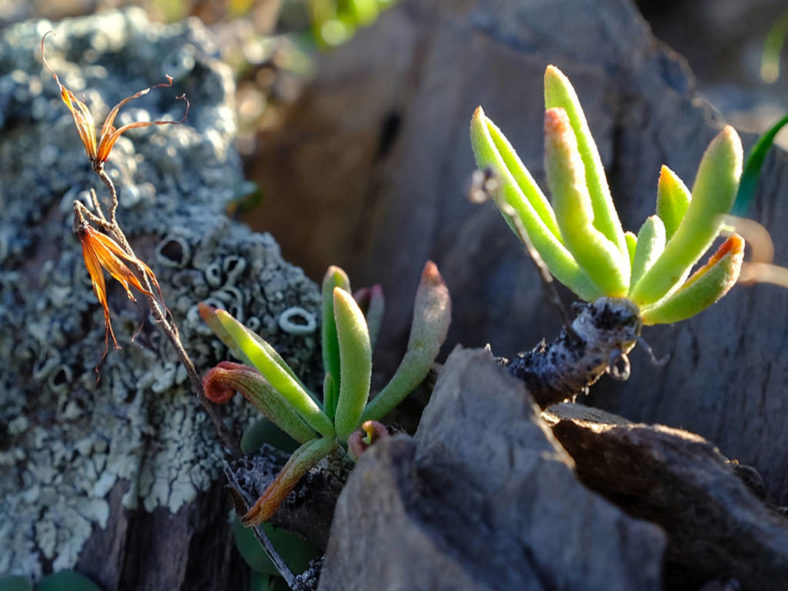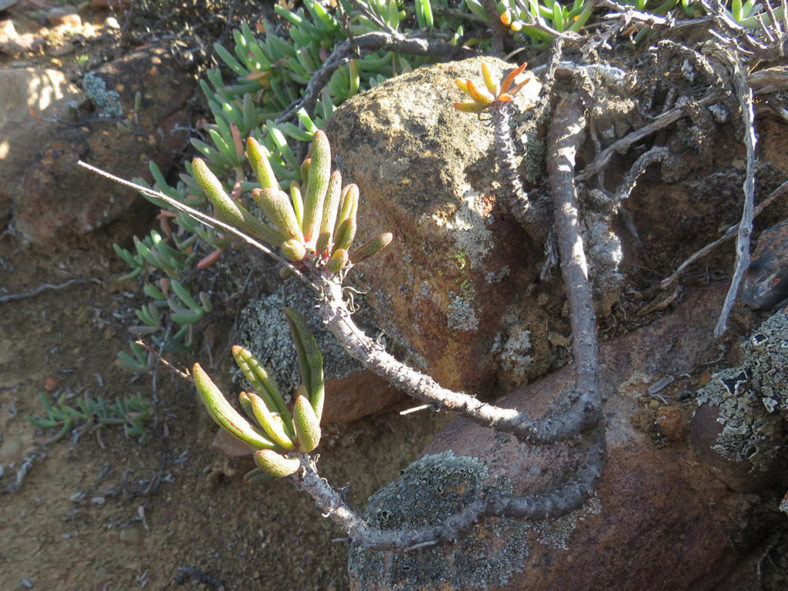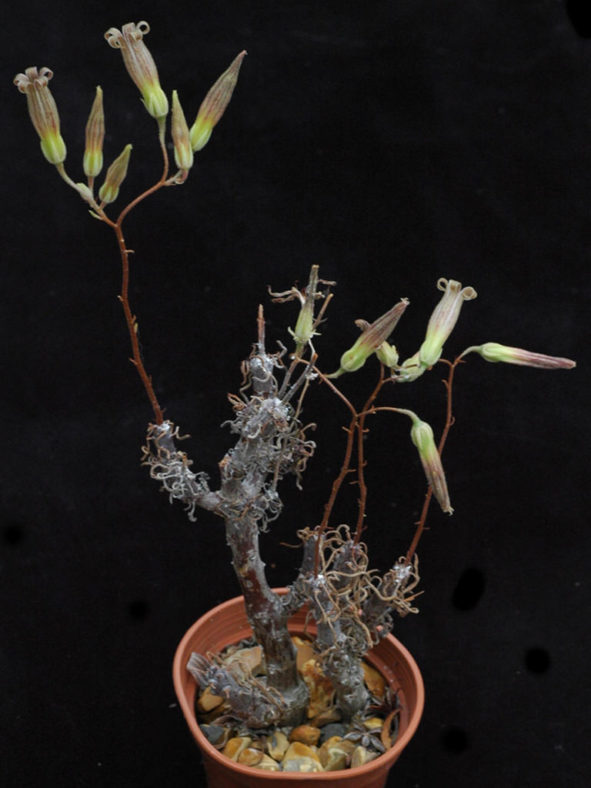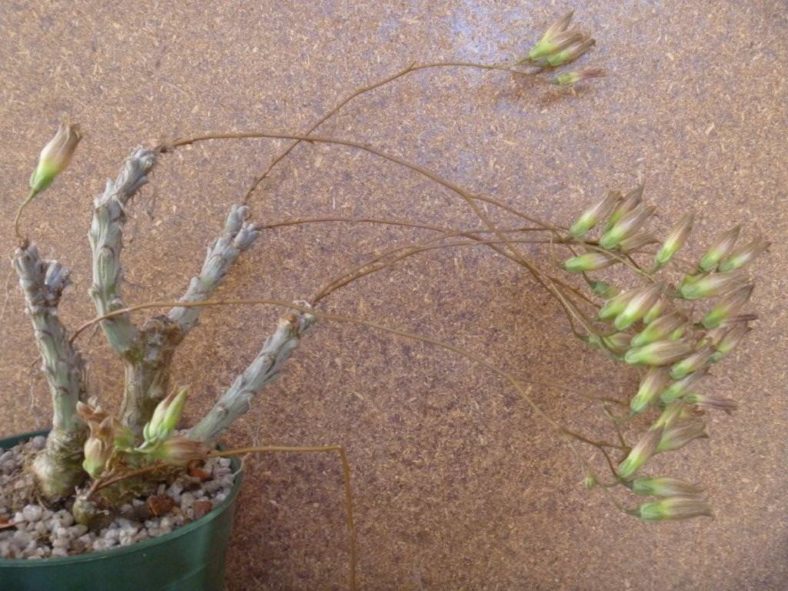Scientific Name
Tylecodon striatus (Hutchison) Toelken
Common Name(s)
Groovy Butterbush
Synonym(s)
Cotyledon striata
Scientific Classification
Family: Crassulaceae
Subfamily: Kalanchoideae
Genus: Tylecodon
Etymology
The specific epithet "striatus (stree-AH-tus)" means "furrowed; grooved, fluted, striated" and refers to the upper face of the leaves, which is usually grooved or channeled.
Origin
Tylecodon striatus is native to South Africa. It grows on rocky slopes, usually sheltered under rocks or shrubs in the mountains west of Vioolsdrif, but mainly from Namaqualand south of the Kamiesberg and occasionally from the northeastern parts of the Cederberg mountains.
Description
Tylecodon striatus is a small succulent shrub with usually few erect or spreading branches arising from an irregular tuberous base. It can grow up to 10 inches (25 cm) tall, while the tuber can reach up to 2.4 inches (6 cm) in diameter. Older branches are covered with yellowish peeling bark and remains of old leaves attached to decurrent leaf bases, rarely phyllopodia. The young branches have pale grey-green bark with dark grey striations. The leaves are linear, with the upper face grooved or channeled, rarely flat, and usually greyish-green. They can measure up to 2.8 inches (7 cm) long and 0.2 inches (0.5 cm) in diameter.
The flowers are tubular, yellowish-green below, and with reddish-brown veins above. They can reach up to 0.6 inches (1.5 cm) in length and appear in elongated glandular-pubescent thyrses with 1 to 5 monochasia in mid-summer after the leaves start to drop off. The thyrses can grow up to 14 inches (35 cm) tall.

How to Grow and Care for Tylecodon striatus
Light: This succulent can survive direct sunlight exposure without problems, but it will grow beautifully in partial shade.
Soil: A well-draining soil mix is a key to healthy T. striatus. Poor drainage and overwatering most commonly cause root rot in both indoor and outdoor plants. Indoors, it is essential to use pots with at least one drainage hole at the bottom.
Temperature: Like all Tylecodons, this succulent is highly tolerant when it comes to high temperatures and also tolerant of cold, frost-free conditions during the winter. T. striatus can withstand temperatures as low as 30 °F (-1.1 °C). USDA Plant Hardiness Zones 10a to 11b, 30 to 50 °F (-1.1 to 10 °C).
Watering: As a winter grower, T. striatus requires careful watering during winter and spring. Get the soil wet, and then wait until it is dry before watering again. In summer, reduce watering to once per month.
Fertilizing: Use liquid fertilizer for cacti and other succulents in winter.
Repotting: You do not need to repot this plant often. You can do it when the container becomes too small or shallow.
Propagation: T. striatus can be cultivated either by seed or by cuttings. Sow the seeds in fall and winter. The best time for taking cuttings is the fall.
Learn more at How to Grow and Care for Tylecodon.
Toxicity of Tylecodon striatus
T. striatus is adapted to avoid animal predation being poisonous. Therefore, keeping it away from children, pets, and livestock is best.
Links
- Back to genus Tylecodon
- Succupedia: Browse succulents by Scientific Name, Common Name, Genus, Family, USDA Hardiness Zone, Origin, or cacti by Genus
Photo Gallery
Click on a photo to see a larger version.


